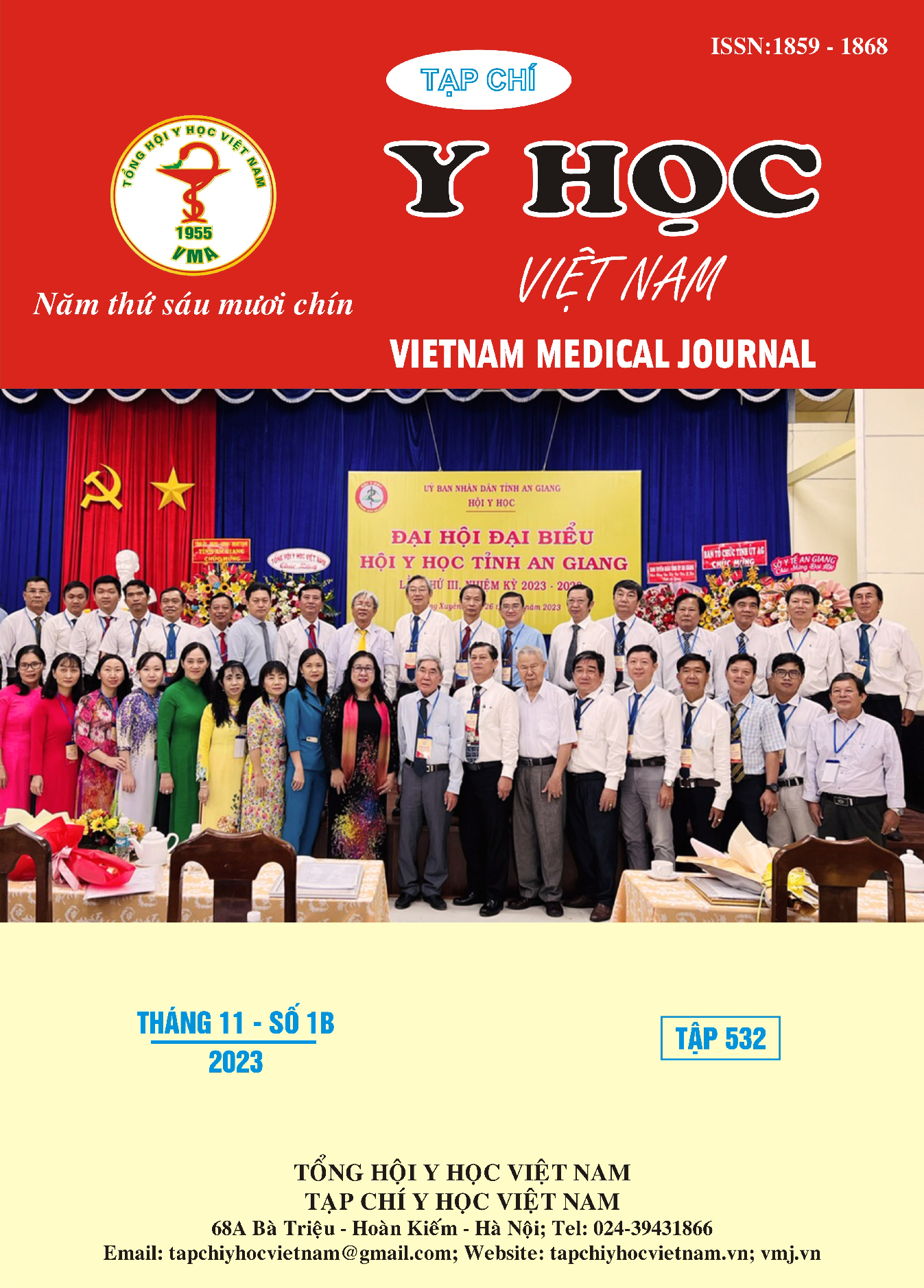FACTORS RELATED TO SEPSIS-ASSOCIATED LIVER INJURY IN PEDIATRIC
Main Article Content
Abstract
Objectives: To find factors associated with sepsis-associated liver injury (SALI) in children. Methods: A clinical cross-sectional study was conducted on 198 pediatric sepsis patients at the Intensive Care Department, National Hospital of Pediatrics, from May 2022 to the end of April 2023. Results: The rate of SALI in pediatric patients with sepsis is relatively high, accounting for 32% (64/198 sepsis patients ). Clinical forms of SALI include hypoxic hepatitis (24/64, 37%), cholestasis (21/64, 33%), and hepatocellular injury (19/64, 30%). The median (IQR) age of the SALI group was 15.75 (6.9 - 81.9) months. SALI patients were hospitalized with severe symptoms, shown by: a high VIS median (IQR) score of 35 (20 - 67), high rate of kidney failure (46.88%), very high rate of the need for dialysis (56.3%), blood albumin (mean ± SD) is low reduced 29.15 ± 4.93 g/l, SGOT (AST) median (IQR) is very high 272 (182 - 617) U/ L, SGPT (ALT) median (IQR) increased 98 (47.4 - 239) U/L, LDH median (IQR) high 1201.5 (717.75 - 3034) U/L, PLT median (IQR) severely decreased 172.5 ± 161.28 G/L, metabolic acidosis with pH (mean ± SD) 7.26 ± 0.16 and BE (mean ± SD) 12.9 ± 6.33 mmol/l, finally is the high mortality rate (40.7%). Conclusion: Pediatric patients with sepsis have SALI at a relatively high rate, have extremely severe manifestations, and have a higher mortality rate than sepsis patients without SALI. pSOFA is a factor independently associated with SALI in pediatric sepsis patients.
Article Details
Keywords
Sepsis-associated liver injury (SALI), sepsis.
References
2. Blanco J, Muriel-Bombín A, Sagredo V, et al. Incidence, organ dysfunction and mortality in severe sepsis: a Spanish multicentre study. Crit Care. 2008;12(6):R158. doi:10.1186/cc7157
3. Angus DC, Linde-Zwirble WT, Lidicker J, Clermont G, Carcillo J, Pinsky MR. Epidemiology of severe sepsis in the United States: analysis of incidence, outcome, and associated costs of care. Crit Care Med. 2001;29(7):1303-1310. doi:10.1097/00003246-200107000-00002
4. Goldstein B, Giroir B, Randolph A. International pediatric sepsis consensus conference: Definitions for sepsis and organ dysfunction in pediatrics*: Pediatr Crit Care Med. 2005;6(1):2-8. doi:10.1097/01.PCC.0000149131.72248.E6
5. Saini K, Bolia R, Bhat NK. Incidence, predictors and outcome of sepsis-associated liver injury in children: a prospective observational study. Eur J Pediatr. 2022;181(4):1699-1707. doi:10.1007/ s00431-022-04374-2
6. Godlief R, Hakim DDL, Prasetyo D. Relationship between aspartate aminotransferase to platelet ratio index and liver injury in pediatric sepsis. Paediatr Indones. 2021;61(3):149-154. doi:10.14238/pi61.3.2021.149-54
7. Kobashi H, Toshimori J, Yamamoto K. Sepsis-associated liver injury: Incidence, classification and the clinical significance. Hepatol Res Off J Jpn Soc Hepatol. 2013;43(3):255-266. doi:10.1111/ j.1872-034X.2012.01069.x
8. Dou J, Zhou Y, Cui Y, Chen M, Wang C, Zhang Y. AST-to-Platelet Ratio Index as Potential Early-Warning Biomarker for Sepsis-Associated Liver Injury in Children: A Database Study. Front Pediatr. 2019;7:331. doi:10.3389/ fped.2019.00331


